On April 29 1975, as communist tanks were approaching and the long war in Vietnam was coming to a bad end for the United States, the final evacuation of Saigon got under way. It was a shambolic and panicked affair with inadequate preparation. Shelling had closed Tan Son Nhat airport - the intended gateway for the evacuation. A helicopter airlift was ordered.
War photographer Hugh Van Es took a shot of a US chopper precariously perched on the roof of a downtown apartment complex - The Pittman building. US officials and Vietnamese were lined up waiting for more choppers to arrive.
The image has been revived in papers around the world in 2025 as the 50th anniverary of the fall of Saigon aka. the liberational of Saigon has been remembered.
Two Rusty Compass videos from the Pittman Apartment aka. CIA building rooftop Saigon
These two videos feature the Pittman Apartment rooftop. In the first I escort American author and historian Larry Berman to the rooftop. It's his first time and as you can see, it's a moving experience. Larry's book Perfect Spy is highly recommended for history enthusiasts.
The second video is a travel guide to America in Vietnam (2025).
The Pittman rooftop became a global symbol of US failure in Vietnam. It’s not an official tourist site, but it’s usually possible to get up on the roof for a look. If you're familiar with the photo - it can be a profound experience. It seems to have barely changed in four decades.
The Pittman building rooftop may be the most frequently published rooftop in the world. Since it was photographed on 29 April 1975, it’s been reproduced in newspapers, magazines and online year after year as a symbol the fall of Saigon, and the messy US departure from its war in Vietnam.
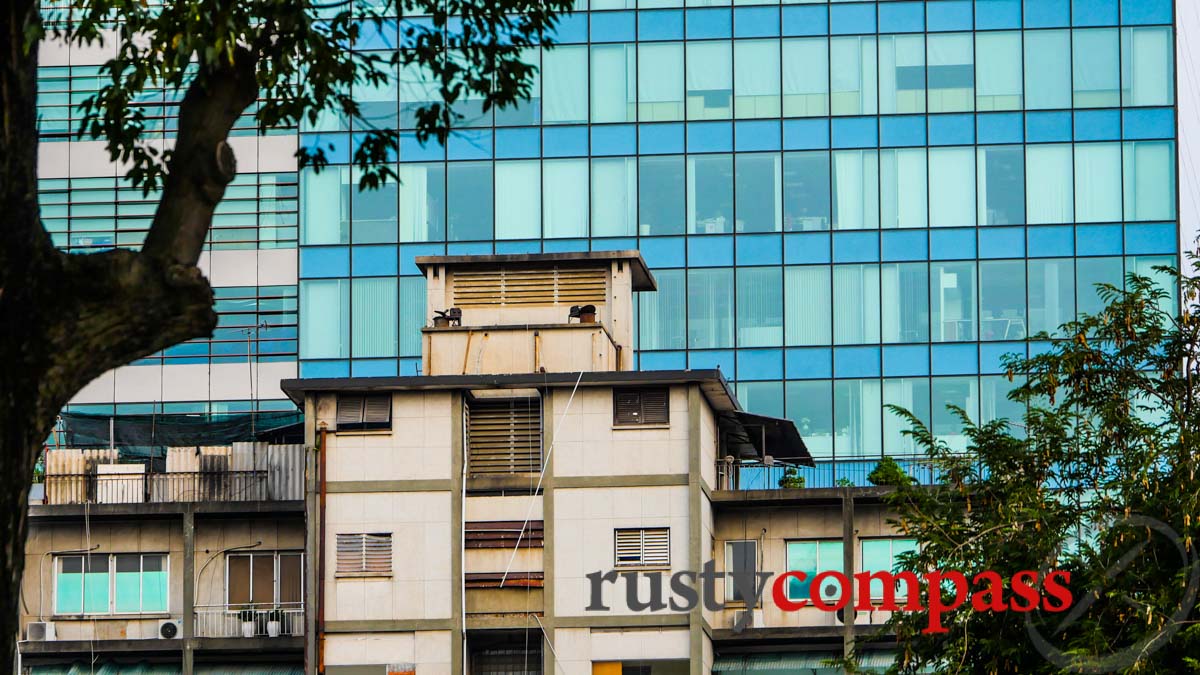
Photo: Mark Bowyer Site of the April 1975 US chopper evacuation captured by Hu Van Es.
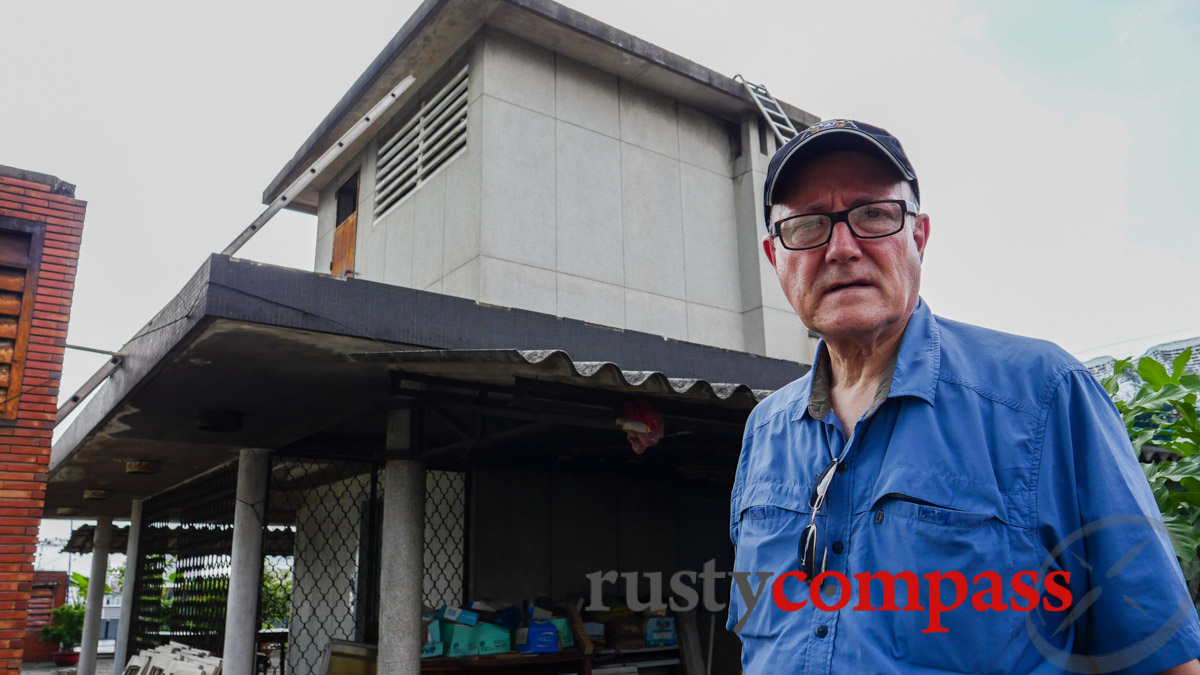
Photo: Mark Bowyer Author Larry Berman on the Pittman building rooftop.
Most travellers walk past the building at 22 Ly Tu Trong (formerly Gia Long) in downtown Saigon without knowing its place in history. There are no signs and this is not a tourist sight.
If you want to head up to the top, if you’re lucky, you’ll need to pay the guard (going rate seems to be 100,000VND for 2).
If you can’t get into the Pittman building, check out where it is first (22 Ly Tu Trong St, District 1). You can then view it from the front of Vincom Centre on Dong Khoi St or from the other side at the central Post Office.
Pittman Apartments Background
As communist troops closed in on Saigon at the end of April 1975, shelling had rendered Tan Son Nhat Airport unusable. The evacuation of US personnel and Vietnamese officials had to be carried out by choppers. This seriously limited the scale of the evacuation and meant that many Vietnamese were left behind.
As the airlift gathered pace on April 29, war photographer Hugh van Es captured US chopper on top of the Pittman building - a CIA residential block. It was a profound image - often mistakenly captioned as the US Embassy.
The chopper, once a symbol of US military superiority and prestige in Vietnam, looked hopelessly inadequate for the task it had been set. And the might of the world’s greatest military power had been reduced to this. Little wonder the image has retained its narrative power.
You can view the image and read about Hugh van Es here.

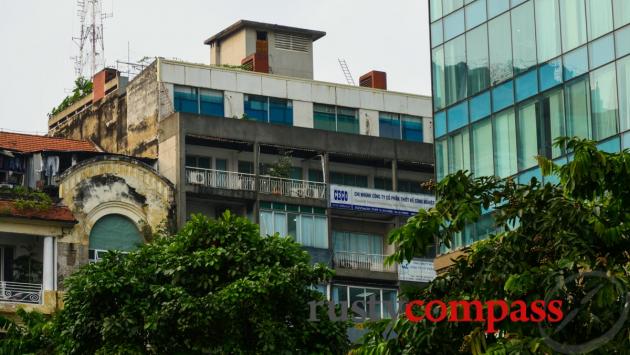
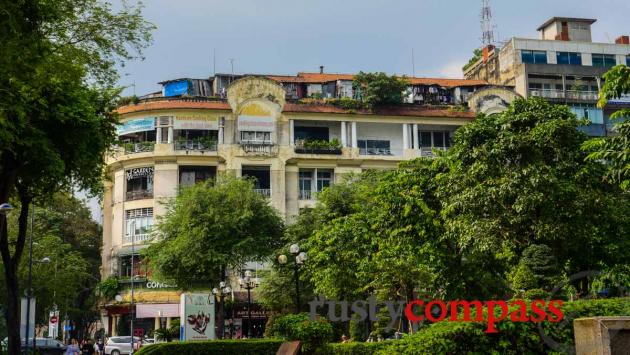
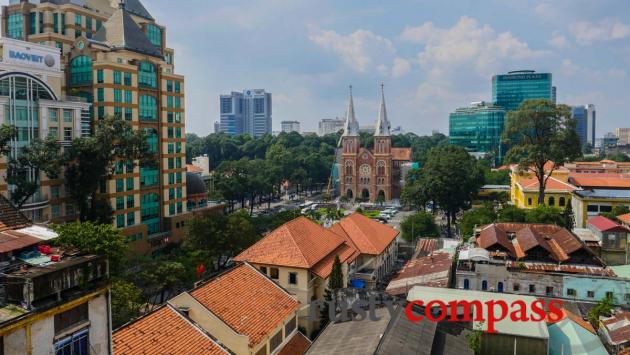
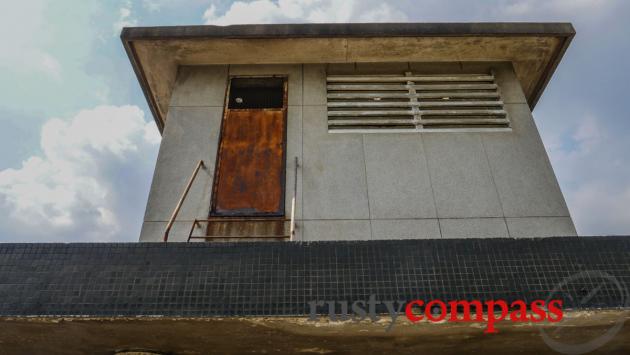
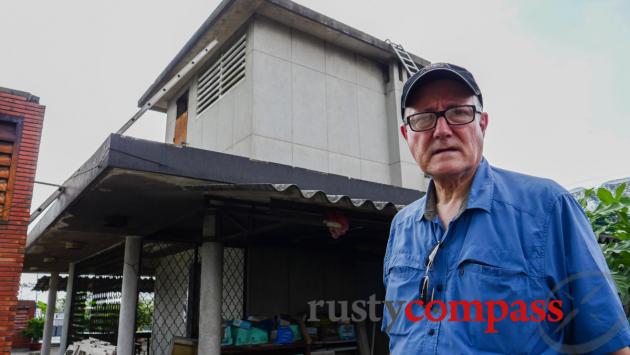
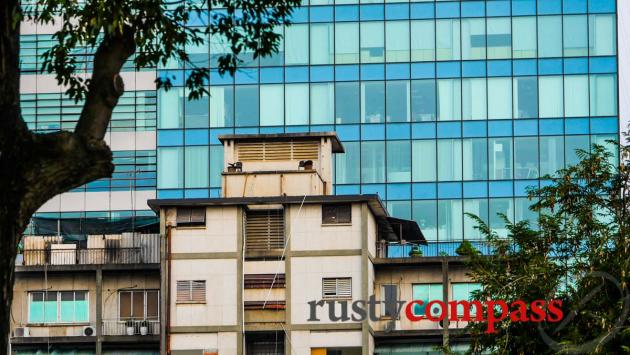







There are no comments yet.